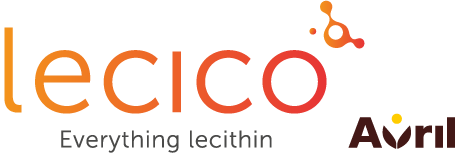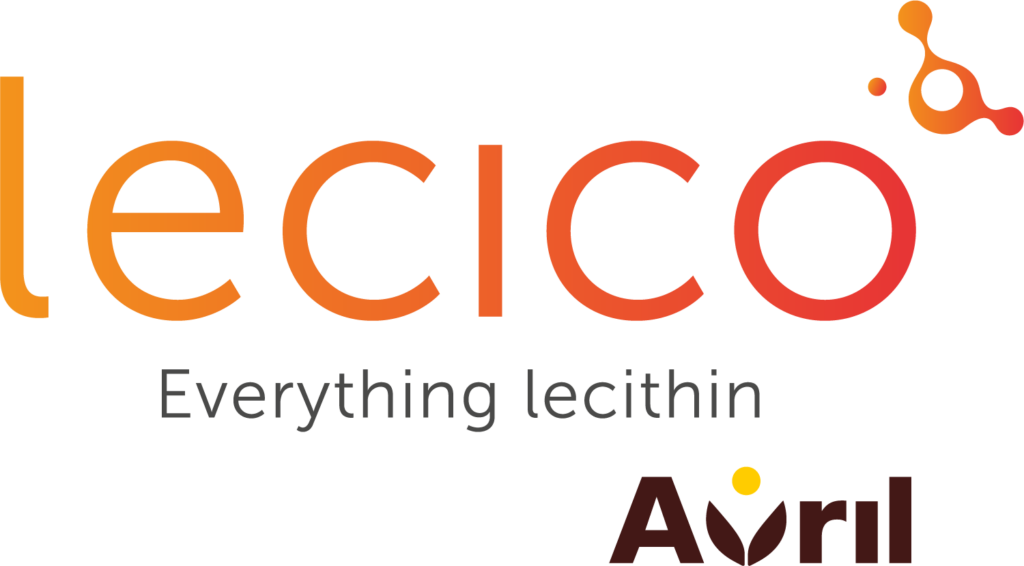Release Agent
Lecithin hat eine sehr gute Grenzflächenaktivität
Pan, mold and belt release, food separation and industrial release application
Release agents are used in all kinds of food and technical applications. Sticking of food products or burned pieces on pans, tins, molds and belts are a common burden in bakery and confectionary applications. Release agents are also used for removal of sticking materials from hot or cold surfaces of moulds and pans. Or it can be the substance that prevents sticking of products to each other, like slices of cheese. The dosage on oil basis varies between 5 to 15%.
Due to its amphoteric behavior (lecithin possesses both positive and negative charges and contains both hydrophobic and hydrophilic groups), lecithin can interact between polar and non-polar materials, like in pan release and lubricants. The lecithin molecules form a barrier between the food product and the pan, mold or belt. An interface is formed between the non-polar oil release product/food product and the polar groups of the pan/mold or belt.
Pan and mold release
Lecithin improves the anti-sticking and release characteristics of the food product out of the pan and mold. It forms an interaction barrier between the food product and the metal surface.
The lecithin is used in different formulations like:
- Pure low viscous lecithin compounds
- Oil/lecithin mixtures
- Pump and aerosol sprays: oil, lecithin, propellant
Next to these formulations, it can also be an emulsion of water and oil. Deoiled lecithin is an excellent lecithin to make an O/W emulsion for release/non sticking cooking spray. Fluid lecithin improves the heat-resistant and provides a reduction in the darkening process during heating. The release agents can directly be applied on the cooking surfaces or used in the food grinders, extruders, cutters. Lecithin can also be incorporated in the food formula to encourage mold release.
Continuous cooking / freezing belt release
Oily and aqueous formulas with lecithin are developed for better release, non-sticking of the food from the belt. This layer will also control the formation of the final shape and dimensions of the end product, when food products are extruded from the dough mass on the belt:e.g. biscuits. The lecithin systems are also used for a better cleaning and rinsing of the belt. Examples of applications are: Fried, baked, pre-cooked or marinated products, like meat products, breaded products, pizza, biscuits, snacks or dehydrated or frozen products like fruits and vegetables (potatoes, and fries).
Food release, separation agent
Cheese and meat products have varying moisture levels and are stored under different conditions of temperature and humidity. These conditions provoke sticking of slices of cheese or meat to each other or to the cutting knives, wires, grinders and extruders. Low viscous lecithin can be used as a non-sticking aid and forms a barrier between the sliced and shredded products.
Technical product release
In addition to food applications, lecithin can also be used as release component in technical applications. Based on the same principle of creating a barrier between the end product and the mold, lecithin is used in e.g.: release of car tires out of their molds or release of concrete out of its formwork. Applied in asphalt road technology for better tire release

Advantages
- Good release
- Good sticking power
- Low viscosity for spraying
- Stability at different temperatures
- Perfect physical stability
- Dissolved in oil
- Dispersed in water
- Direct incorporation
- Easy spray ability
- Highly surface-active
- Easy removal of sticking products from hot/cold surfaces of moulds
- Prevents foods from sticking together
- Biodegradable
- Food proof
- Lower caloric level than oil
- Less overspray
- Savings in time, cleaning and costs
Product solution
LIPAMINE PC 30
Fluid Phosphatidylcholine enriched Soya Lecithin
30% PC

